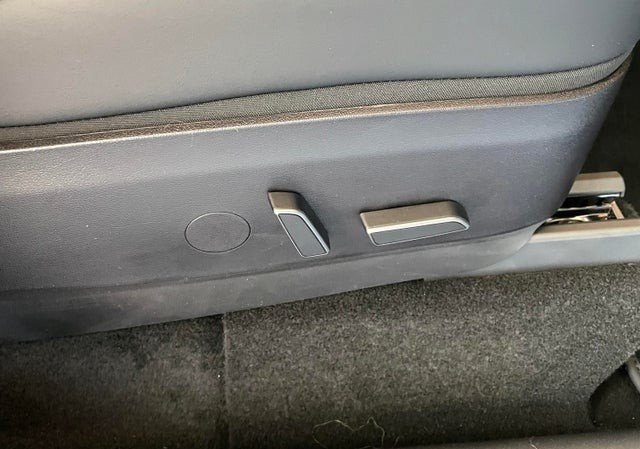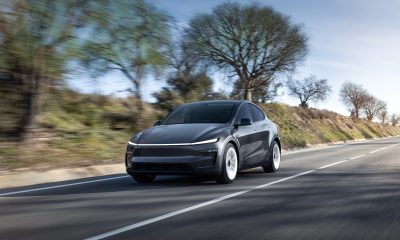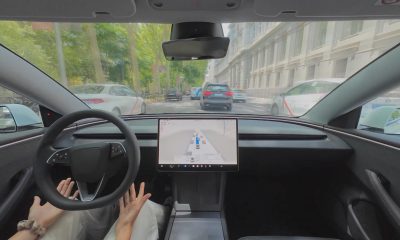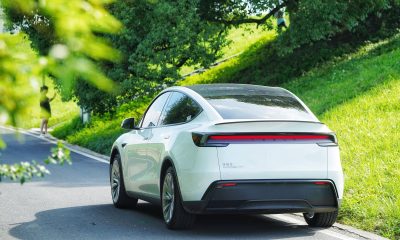This is a preview from our weekly newsletter. Each week I go ‘Beyond the News’ and handcraft a special edition that includes my thoughts on the biggest stories, why it matters, and how it could impact the future.
Tesla’s strong financial spreadsheet that has culminated in seven consecutive quarters of profitability has launched the electric car company into a more stable fiscal situation. For years, especially in my early days at Teslarati, I can remember the big narrative being Tesla’s Quarter-over-Quarter growth, but the fact that profitability wasn’t achieved very often made the company one of the more risky investments at the time.
Since then, Tesla has managed to work out a profitable quarter seven times in a row. Unbelievably, the company that has only been mass-producing vehicles since Summer 2017 is already a shoo-in for money-making quarters, at least that’s what it seems like. There never seems to be a glimmer of doubt when it comes to Tesla reporting strong financials. But, it became clear earlier this week that Tesla, despite having such strong financials quarter after quarter, isn’t willing to spend money on things that owners and customers don’t use. The company’s phase-out of the passenger lumbar support feature in the Model 3 and Model Y is a prime example of the way Tesla is simplifying its vehicles to improve profitability and margins, making their cars even more of a money-making machine than they were previously.
On May 31st, a tweet from @Ryanth3nerd showed his discontent for Tesla’s removal of the lumbar support option on the passenger’s seat. It was noticed by a Model Y owner on Reddit initially that the lumbar support option was removed from the side of the seat, only leaving the reclining option and seat adjustment levers for passenger adjustment.
“I really don’t like the direction @tesla is going raising prices of vehicles but removing features like lumbar for the Model Y. On top of rumors of FSD increase to $14k without any real added features to FSD unless you’re a beta tester,” the tweet said.
It is true that Model 3 and Model Y prices alike have increased in the past several months. This is likely due to the semiconductor or microcontroller shortage that has plagued much of the automotive industry for the past few quarters. Additionally, Musk said raw material costs are also affecting Tesla’s prices.
According to Musk, Tesla had a good reason for phasing out the lumbar support module, and it had to do with data usage logs that showed the lumbar support wasn’t utilized by passengers very often. In fact, it was used so infrequently that Tesla decided to scrap the module altogether in the 3 and Y.
“Moving lumbar was removed only in front passenger seat of 3/Y (obv not there in rear seats). Logs showed almost no usage. Not worth cost/mass for everyone when almost never used. Prices increasing due to major supply chain price pressure industry-wide. Raw materials especially.”
Moving lumbar was removed only in front passenger seat of 3/Y (obv not there in rear seats). Logs showed almost no usage. Not worth cost/mass for everyone when almost never used.
Prices increasing due to major supply chain price pressure industry-wide. Raw materials especially.
— Elon Musk (@elonmusk) May 31, 2021
Now, while this is a good point for Tesla to use as justification for their seat modification decisions, there are a few things that sort of confused me about the decision. First off, once a seat is adjusted, I think very few people want to change it. I know that when I get into a friend’s car, I rarely adjust the seat because that is probably the way their significant other prefers the seat to be set. As a driver in my own car, I know that I have only adjusted my seat on two or three occasions since I got it. Very rarely does it move, because the adjustments I made when I bought it were how I felt it was most comfortable, so I didn’t move it.
I think there could have been some confusion about whether the lumbar support is actually used, or whether it is a “set and forget” type of reasoning. I think many people find the way they like their seat, and it rarely changes over the course of the ownership experience.
While I doubt too many people will not buy a Tesla because they can’t adjust lumbar support, I think that there are some people who will look at it as a real disadvantage because there are plenty of people who need to utilize it for comfortability, especially if they have back problems. Nevertheless, it could be a temporary removal if enough people raise concerns to Musk via Twitter.
The biggest lesson here seems to be that Tesla’s use of data and analytics gives the company an extreme advantage when it comes to saving money on even the most trivial of parts. While Tesla will save some money from its recent decision to not equip Model 3 and Model Y cars with radar, the lumbar support removal also summarizes the company’s mission to take out what is not needed. Teslas are already so minimalistic as it is, and many people enjoy the lack of knobs and buttons on the interior. However, this is one knob that many owners may not be happy not having, but it remains to be seen if it saves Tesla’s enough money to justify keeping the feature left out from its two mass-market vehicles. -JK-
A big thanks to our long-time supporters and new subscribers! Thank you.
I use this newsletter to share my thoughts on what is going on in the Tesla world. If you want to talk to me directly, you can email me or reach me on Twitter. I don’t bite, be sure to reach out!
-Joey
News
Tesla UK sales see 14% year-over-year rebound in June: SMMT data
The SMMT stated that Tesla sales grew 14% year-over-year to 7,719 units in June 2025.

Tesla’s sales in the United Kingdom rose in June, climbing 14% year-over-year to 7,719 units, as per data from the Society of Motor Manufacturers and Traders (SMMT). The spike in the company’s sales coincided with the first deliveries of the updated Model Y last month.
Model Y deliveries support Tesla’s UK recovery
Tesla’s June performance marked one of its strongest months in the UK so far this year, with new Model Y deliveries contributing significantly to the company’s momentum.
While the SMMT listed Tesla with 7,719 deliveries in June, independent data from New AutoMotive suggested that the electric vehicle maker registered 7,891 units during the month instead. However, year-to-date figures for Tesla remain 2% down compared to 2024, as per a report from Reuters.
While Tesla made a strong showing in June, rivals are also growing. Chinese automaker BYD saw UK sales rise nearly fourfold to 2,498 units, while Ford posted the highest EV growth among major automakers, with a more than fourfold increase in the first half of 2025.
Overall, the UK’s battery electric vehicle (BEV) demand surged 39% to to 47,354 units last month, helping push total new car sales in the UK to 191,316 units, up 6.7% from the same period in 2024.
EV adoption accelerates, but concerns linger
June marked the best month for UK car sales since 2019, though the SMMT cautioned that growth in the electric vehicle sector remains heavily dependent on discounting and support programs. Still, one in four new vehicle buyers in June chose a battery electric vehicle.
SMMT Chief Executive Mike Hawes noted that despite strong BEV demand, sales levels are still below regulatory targets. “Further growth in sales, and the sector will rely on increased and improved charging facilities to boost mainstream electric vehicle adoption,” Hawes stated.
Also taking effect this week was a new US-UK trade deal, which lowers tariffs on UK car exports to the United States from 27.5% to 10%. The agreement could benefit UK-based EV producers aiming to expand across the country.
News
Tesla Model 3 ranks as the safest new car in Europe for 2025, per Euro NCAP tests
Despite being on the market longer than many of its rivals, the Tesla Model 3 continues to set the bar for vehicle safety.

The Tesla Model 3 has been named the safest new car on sale in 2025, according to the latest results from the Euro NCAP. Among 20 newly tested vehicles, the Model 3 emerged at the top of the list, scoring an impressive 359 out of 400 possible points across all major safety categories.
Tesla Model 3’s safety systems
Despite being on the market longer than many of its rivals, the Tesla Model 3 continues to set the bar for vehicle safety. Under Euro NCAP’s stricter 2025 testing protocols, the electric sedan earned 90% for adult occupant protection, 93% for child occupant protection, 89% for pedestrian protection, and 87% for its Safety Assist systems.
The updated Model 3 received particular praise for its advanced driver assistance features, including Tesla’s autonomous emergency braking (AEB) system, which performed well across various test scenarios. Its Intelligent Speed Assistance and child presence detection system were cited as noteworthy features as well, as per a WhatCar report.
Other notable safety features include the Model 3’s pedestrian-friendly pop-up hood and robust crash protection for both front and side collisions. Euro NCAP also highlighted the Model 3’s ability to detect vulnerable road users during complex maneuvers, such as turning across oncoming traffic.
Euro NCAP’s Autopilot caution
While the Model 3’s safety scores were impressive across the board, Euro NCAP did raise concerns about driver expectations of Tesla’s Autopilot system. The organization warned that some owners may overestimate the system’s capabilities, potentially leading to misuse or inattention behind the wheel. Even so, the Model 3 remained the highest-scoring vehicle tested under Euro NCAP’s updated criteria this year.
The Euro NCAP’s concerns are also quite interesting because Tesla’s Full Self-Driving (FSD) Supervised, which is arguably the company’s most robust safety suite, is not allowed for public rollout in Europe yet. FSD Supervised would allow the Model 3 to navigate inner city streets with only minimal human supervision.
Other top scorers included the Volkswagen ID.7, Polestar 3, and Geely EX5, but none matched the Model 3’s total score or consistency across categories. A total of 14 out of 20 newly tested cars earned five stars, while several models, including the Kia EV3, MG ZS, and Renault 5, fell short of the top rating.
Elon Musk
Why Tesla’s Q3 could be one of its biggest quarters in history
Tesla could stand to benefit from the removal of the $7,500 EV tax credit at the end of Q3.

Tesla has gotten off to a slow start in 2025, as the first half of the year has not been one to remember from a delivery perspective.
However, Q3 could end up being one of the best the company has had in history, with the United States potentially being a major contributor to what might reverse a slow start to the year.
Earlier today, the United States’ House of Representatives officially passed President Trump’s “Big Beautiful Bill,” after it made its way through the Senate earlier this week. The bill will head to President Trump, as he looks to sign it before his July 4 deadline.
The Bill will effectively bring closure to the $7,500 EV tax credit, which will end on September 30, 2025. This means, over the next three months in the United States, those who are looking to buy an EV will have their last chance to take advantage of the credit. EVs will then be, for most people, $7,500 more expensive, in essence.
The tax credit is available to any single filer who makes under $150,000 per year, $225,000 a year to a head of household, and $300,000 to couples filing jointly.
Ending the tax credit was expected with the Trump administration, as his policies have leaned significantly toward reliance on fossil fuels, ending what he calls an “EV mandate.” He has used this phrase several times in disagreements with Tesla CEO Elon Musk.
Nevertheless, those who have been on the fence about buying a Tesla, or any EV, for that matter, will have some decisions to make in the next three months. While all companies will stand to benefit from this time crunch, Tesla could be the true winner because of its sheer volume.
If things are done correctly, meaning if Tesla can also offer incentives like 0% APR, special pricing on leasing or financing, or other advantages (like free Red, White, and Blue for a short period of time in celebration of Independence Day), it could see some real volume in sales this quarter.
You can now buy a Tesla in Red, White, and Blue for free until July 14 https://t.co/iAwhaRFOH0
— TESLARATI (@Teslarati) July 3, 2025
Tesla is just a shade under 721,000 deliveries for the year, so it’s on pace for roughly 1.4 million for 2025. This would be a decrease from the 1.8 million cars it delivered in each of the last two years. Traditionally, the second half of the year has produced Tesla’s strongest quarters. Its top three quarters in terms of deliveries are Q4 2024 with 495,570 vehicles, Q4 2023 with 484,507 vehicles, and Q3 2024 with 462,890 vehicles.
-

 Elon Musk4 days ago
Elon Musk4 days agoTesla investors will be shocked by Jim Cramer’s latest assessment
-

 News1 week ago
News1 week agoTesla Robotaxi’s biggest challenge seems to be this one thing
-

 Elon Musk2 weeks ago
Elon Musk2 weeks agoFirst Look at Tesla’s Robotaxi App: features, design, and more
-

 News2 weeks ago
News2 weeks agoWatch Tesla’s first driverless public Robotaxi rides in Texas
-

 News2 weeks ago
News2 weeks agoSpaceX and Elon Musk share insights on Starship Ship 36’s RUD
-

 News1 week ago
News1 week agoWatch the first true Tesla Robotaxi intervention by safety monitor
-

 News2 weeks ago
News2 weeks agoTesla has started rolling out initial round of Robotaxi invites
-

 Elon Musk2 weeks ago
Elon Musk2 weeks agoTesla to launch in India in July with vehicles already arriving: report


















